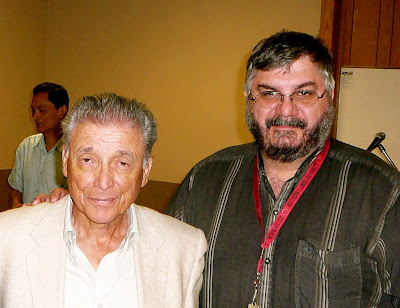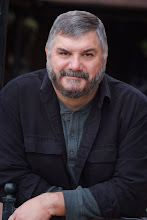Today’s visits explored the huge divides of international politics. We had the honor of meeting with the Ambassador and Representatives of both sides of the Cyprus situation. We were cordially met and hosted by both parties. Each in their own eloquent way made their case and offered hope for a reunification of Cyprus – which I firmly believe both sides wish – but is in the HOW that politics divide the island.

In the morning we met at the Honorable Embassy of the Republic of Cyprus with his Excellency Andreas Kakouris, the Ambassador Extraordinary and Plenipotentiary of the Republic of Cyprus to the United States. A well-spoken man, Ambassador Kakouris was eloquent in speaking of his country and the need for reunification. He shared with us his happiness of the opening of the Ledra Street gate in Nicosi, allowing both Greek and Turkish Cypriots to cross the border. He also shared the painful story of his parents returning to their home in Northern Cyprus to find them destroyed or turned into parking lots.
He talked about three key aspects related to the Turkish invasion of Cyprus– Democracy, Human Rights, and the Rule of Law. It is the issues surrounding the Rule of Law that complicate this situation, especially related to the continued Turkish military presence on the island, Turkish immigration, and property reclamation. From the Greek Cypriot position, under the Rule of Law – Turkey is the invader and the cause of the problems, escalating tensions and interfering with the legal governance of the island.
He also talked about Kofi Annan proposal for Reunification. The main reason for the 75 percent "no" vote among Greek Cypriots in the referendum was their perception that the Annan Plan was unbalanced and excessively pro-Turkish.
The good news is that a series of working groups in Cyprus are negotiating a shared government structure and the details for reunification in advance of formal meetings beginning this summer.
In the afternoon, we traveled to Georgetown to meet with representative of the Turkish Cyprus Community.

The Representative Office of the Turkish Republic of Northern Cyprus in Washington, D.C. is the de facto embassy of the Turkish Republic of Northern Cyprus to the United States. As the United States does not officially recognize the TRNC as an independent country, the mission does not have formal diplomatic status.
Hilmi Akil serves as the Washington D.C. Representative of the Turkish Cypriot Community
Mr. Akil was back in Cyprus participating in the Governance Working Group as mentioned above so we met with two of his assistants, Buket Kop – Second Secretary and Gunes Onar, Third Secretary of the Washington Office.
Ms. Kop and Mr. Onar read from the text prepared by Mr. Akil. They were careful with their words as they were representing Mr. Akil in his absence.
They too hoped for reunification but as a separate government – like two states independent with a central government that ties them together. They also want Turkey and NATO to have a protectorate presence on the island while the Greek Cypriots want the Turkish military removed. The also shared the success of the opening of the border gates in Nicosia and that no violence has taken place since the opening.
They were the only side to use the term genocide in their conversation. (We were all given a copy of Harry Gibbons’ book The Genocide Files that looks at the Cyprus situation from the Turkish Cypriots’ perspective.) When asked how can reconciliation can occur on the island following the genocide – they simply stated the two sides got along before and they will again. It will take some time but it will happen. From my perspective, they seem to use the moral argument against genocide as justification to keep a Turkish military presence on the island.
After listening to both sides I know that this is a tense situation. I am certain that atrocities occurred on both sides of this crisis in the ‘70s and that politics have now taken advantage of a horrible situation for gain. In light of all this, it is positive to see efforts to create a political solution that might lead to resolution. What I learned from this situation is the power of politics and the need for political will and determination to confront and intervene is escalating situations, atrocities and crimes against humanity as well as resolve the aftermath.
Evening - Meeting with Roger Smith
Following our day exploring both sides of the Cyprus situation, we met back on the American University campus to meet with Dr. Roger Smith.

Dr. Smith is Professor of Government Emeritus at the College of William and Mary. He is one of the country's foremost experts on genocide, is widely-published on this topic. He is known for his seminal article “American Self-Interest and the Response to Genocide,” which appeared in the Chronicle of Higher Education in July, 2004. More specifically, he has written about the Armenian genocide and women and genocide. He has served as President of the International Association for Genocide Scholars, chairman of the Zoryan Institute's Academic Board of Directors, and as a council member of the Institute on the Holocaust.
This was a wonderful presentation with a global scholar on the subject. The focus of our conversations was on corrupt logic used to justify genocide. It begins with the dehumanization of “the other” and how the perpetrators define their victims. The act of constructing the identity of the victims is focused creating difference and the act of genocide destroys that difference by elimination of the victims. Defining the differences and dehumanizing the victims places them outside the boundaries of moral obligation. To put it another way, because the victims are different and not human (cockroaches), the perpetrators have no moral obligation to treat them as human. The rituals of degradation offer the perpetrators an exhilaration of power that is validated by revenge and a false sense of justice that further discredits the victims. Evil is recognized for good as morality, humanity, and values are perverted to justify the dehumanization and extermination of the other.
We then went on to explore the logic of the doers and categorized them as leaders, managers, and doers.
Leaders pursue genocide for:
• Conquest
• Revenge
• Gain
• Utilitarian exploitation
• Monopoly of power
• Purification/Salvation –ideological pursuit
Managers, those helping to run logistics and run the mechanisms of genocide are:
• Bureaucratic
• Not necessarily ideological
• Technical
• “Desk Murderers”
• Given Permission
and often pursue their activities due to:
• Conformity
• Material Gain
• Sense of belonging
The doers are encouraged to act and given permission to do so by the leaders and managers. They learn how to commit genocide through mimesis and role-playing.
And often pursue their activities due to:
• Peer Pressure
• Material Gain
• Reward / Recognition
We also talked about By-Standers – the individuals who are not victims but don’t do anything to stop the atrocities. They are the “faces in the window” who watch. They do not act due to:
• Fear
• Preservation
• Indifference
• Self-interest
The concept of self-interest also relates to national self-interest. International bodies (Governments) can be by-standers as well. Governments often do not intervening because:
• Situation is not clear
• It’s appears futile
• It’s counter productive to to national self-interest
• It would jeopardize other (more important) goals (Profits)
Real Politique: It refers to the realist's determination to treat politics as they really are and not as the idealist would wish them to be.
We ended this dynamic conversation with a discussion on denial. Denial is part of and is present throughout the genocide process. Denial continues the genocide and continues the attitudes that support the act of genocide. It is, of course, a lie and serves as defense mechanism for the perpetrators helping to preserve self-image.
What is denied?
• The facts of the genocide
• Responsibility for the genocide
• Significance of the genocide
o Relative Rationalism
o Trivialization
• That the term “Genocide” is applicable
Denial is significant because it perpetuates the genocide and dishonors the victims. It also tells former, current, and future perpetrators that they can get away with genocide (Remember Hitler’s famous quote about the Armenian genocide?) Additionally, denial of genocide corrupts research and scholarship and destroys international relations
Denial can be overcome by identifying acts of genocide, commemoration of the events, and remembrance of the lives lost and destroyed.


















